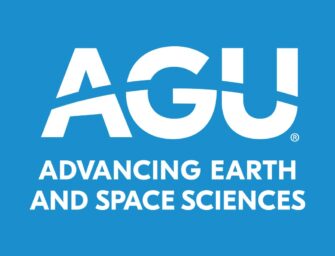An Overview of The Federal Budget Process and Congressional Recess Visits
The congressional appropriations processes for FY 18 – in which both the House of Representatives and the Senate decide how to allocate funds among all federal agencies, is beginning in earnest. Your voice and participation advancing the value of science is needed more than ever. There is no better time to do this than in August when your members of Congress will be back home during the “congressional recess.” You can register here and learn more about how to go about doing this on Thursday, 13 July, when we will be holding a “District Visits How-To” webinar. During the session, you can learn how to schedule a meeting with your representative, tips and tools for crafting your message, and what you can do to ensure that your meeting is a success.
The appropriations process is almost always challenging, time-consuming and filled with political clashes. This year, however, the process is more challenging and convoluted than usual – more on that below. The good news, however, is that AGU members now have a prime opportunity to ask their elected officials to provide the funding for science and the scientific agencies that is pivotal to our nation’s economic vitality, public health, national security, and environmental quality.

Ordinarily, the process starts with each chamber of Congress (House and Senate) passing budget resolutions to set overall limits for both mandatory and discretionary funding for the year. Mandatory funding is the dedicated funding stream for select programs that have been established by Congress, such as Social Security and Medicare– where the fiscal limits are traditionally determined by a formula. Discretionary spending encompasses everything else – science, art, education, national security, crime, etc. – and is decided annually by congressional appropriations committees. Discretionary spending can vary radically depending on the priorities of the current Administration and Congress.
There are House and Senate Appropriations Committees, divided into subcommittees for various federal agencies. The subcommittees that fund the bulk of the Earth and space sciences include Commerce-Justice-Science (NASA, NOAA, and NSF); Energy and Water (Department of Energy), and Interior and Environment (EPA and USGS). Each subcommittee negotiates how to divide the topline budget specific to its purview, then writes, amends and votes on the resulting bill, generally with input from agency officials, other members of Congress and outside organizations.
These bills then progress to the full Appropriations Committees of the respective congressional chambers for a vote or amendment and then to the full House or Senate. If the House and Senate bills are different, they then must be “reconciled” with each other and passed by both chambers again. This process is repeated for all 12 appropriations bills in each chamber. Only then can the bills go to the President to be signed into law. All of this must be done by the end of the fiscal year, 30 September, to avoid a government shutdown.
Of course, Congress has an out – they can pass a continuing resolution (a CR) – which temporarily maintains the previous fiscal year’s spending amounts for the current fiscal year allowance – to provide extra time to finalize the spending bills.
And that’s the normal process! This year, however, President Trump released his full budget request very late – not until the middle of May, the time when most appropriations bills are usually written. Moreover, neither the House nor the Senate has written or passed an FY18 budget resolution – largely because of disagreements within the Republican party over mandatory vs. discretionary funding and defense vs. non-defense spending. That’s important for the sciences because an increase in defense spending would come at the expense of non-defense discretionary (NDD) spending, which includes all funding for science.
What this means in practice is that the appropriations subcommittees could not begin having hearings in earnest until late May, leaving the appropriations process with a very short timeline in which to draft, consider, and pass in both chambers all 12 appropriations bills. What’s more, the appropriations subcommittees are operating with an usually low amount of guidance on funding levels.
It’s entirely possible that Congress will “punt” – either lumping all the funding bills together for one “omnibus” bill very early in the process, or passing a CR for the whole year.
No matter what option Congress pursues, it’s more important than ever for AGU members and others who care about science funding to weigh in with their policy makers about the critical importance of funding for Earth and space science funding. Whether you write to your policy makers or consider having a district visit in August (don’t forget about the “District Visits How-To” webinar on 13 July), and other tips, tools and resources so I encourage you to get engaged.



There are no comments
Add yours